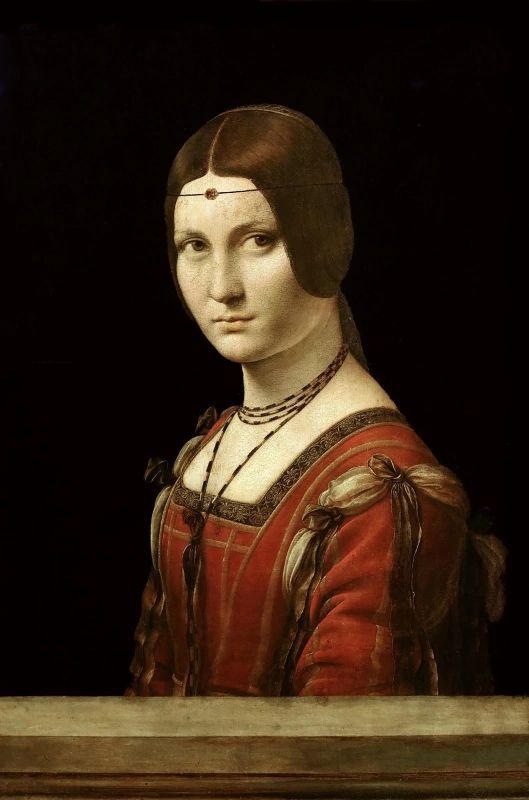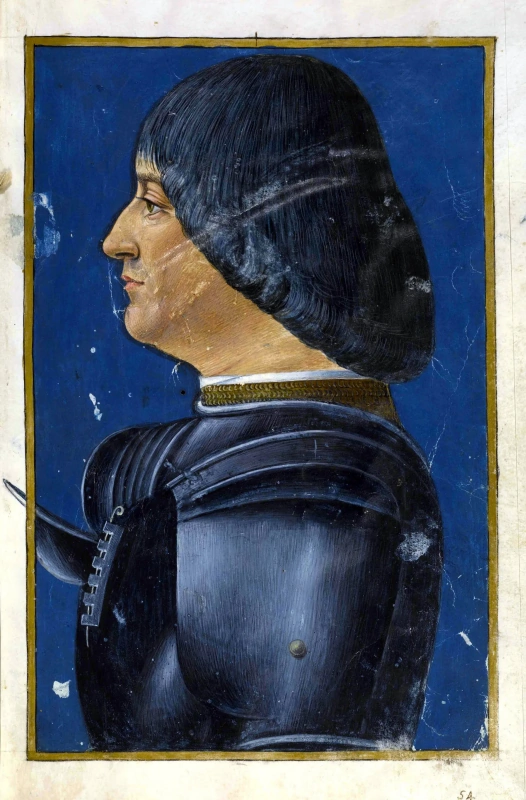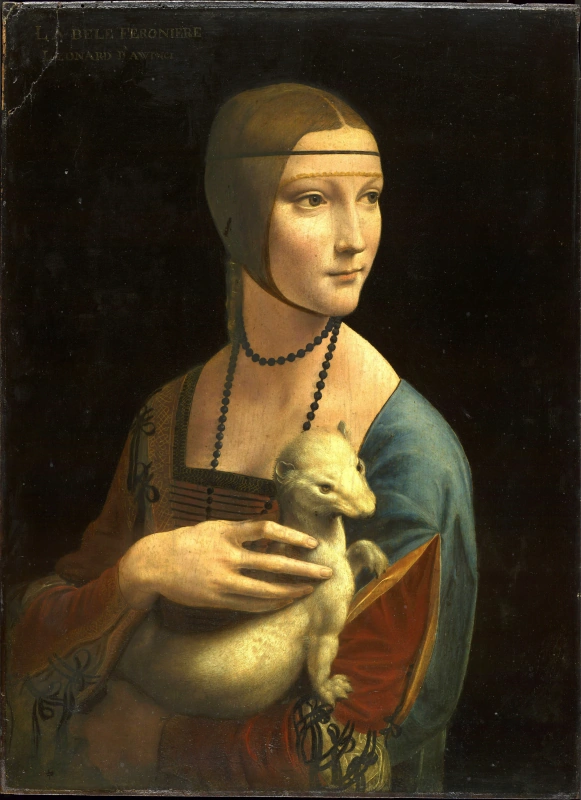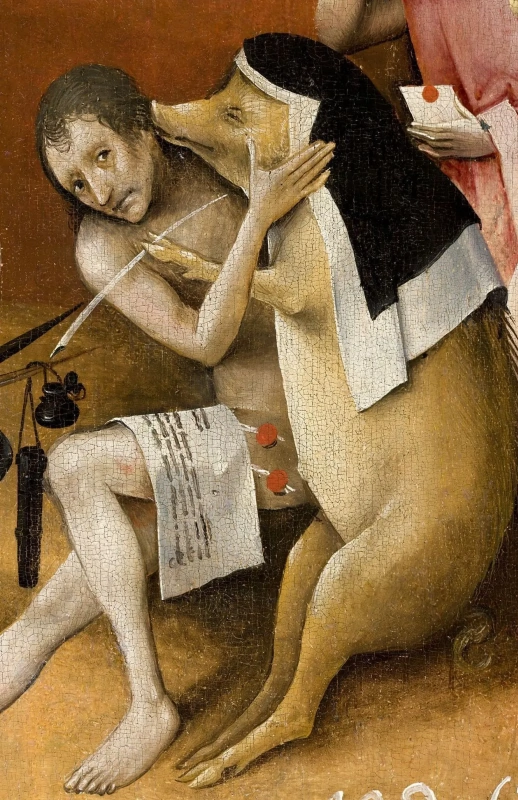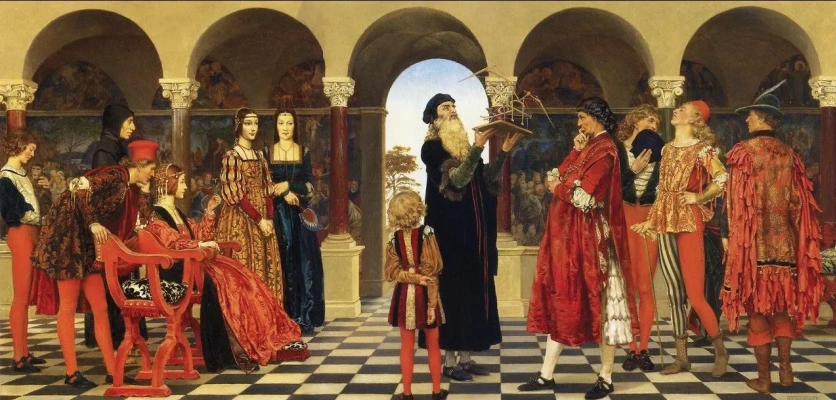В литературном наследии Леонардо да Винчи есть так называемые «предсказания». На самом деле это загадки, но сформулированы они в виде описания сцен из будущего. Сюжеты загадок чаще всего ужасны, как лучшие картины Босха, а решения — просты. Сначала мы расскажем вам, как устроены эти загадки-предсказания, а после предложим разгадать дюжину.
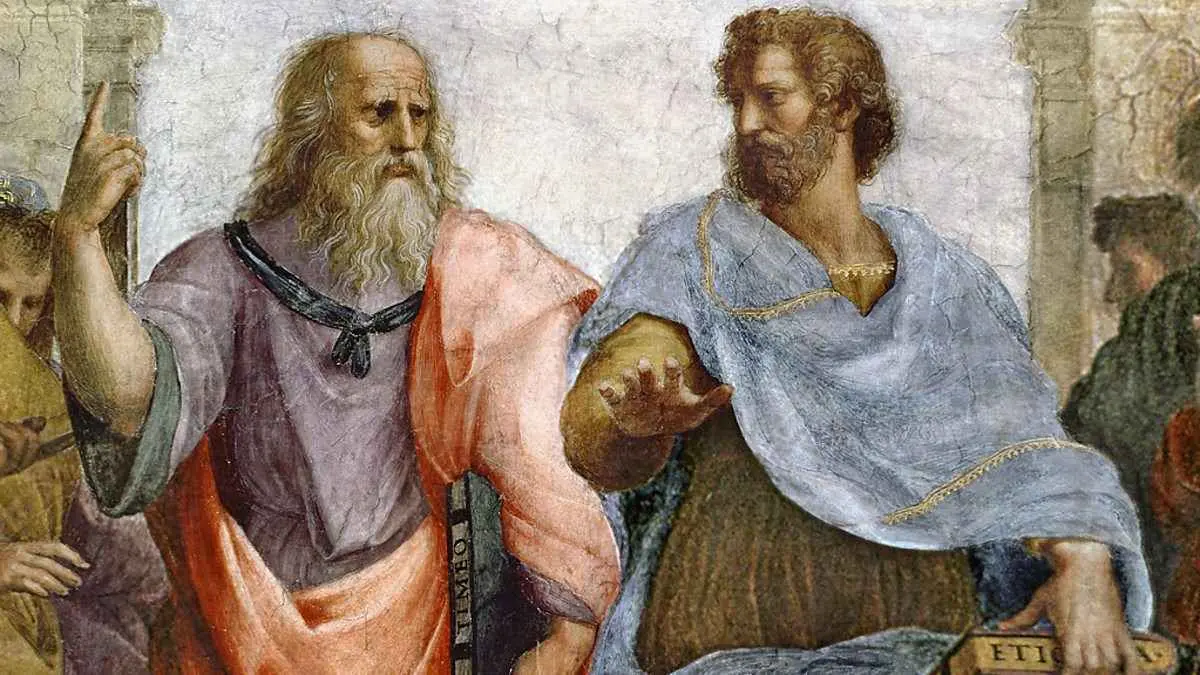
«Предсказания являются игрой в загадки и разгадки. Нет сомнения, что у них было светское назначение и, может быть, даже только придворное. Леонардо придумывал сразу целый ворох таких enigmi или proiezione и сразу заносил их сериями в свои тетради, — объясняет искусствовед Абрам Эфрос. — Он явно готовил их для той или иной оказии, когда собиралось высокое общество и было приятно или обязательно развлекать его. Можно предположить по совокупности данных, что „Предсказания“ были сочинены в миланский период на потребу Лодовико Моро и его окружения и являлись частью тех „занимательностей“, которые Леонардо поставлял своему покровителю и хозяину».
Портрет
Лодовико Моро (также известного как Лодовико Сфорца) да Винчи не оставил, но это сделал его ученик — Джованни Амброджо де Предис. Зато да Винчи, как принято считать, написал двух фавориток своего патрона — Чечилию Галлерани в образе дамы с горностаем и Лукрецию Кривелли, известную нам сегодня под именем Прекрасная Ферроньера.
Вот одно из предсказаний Леонардо (чаще всего он записывал их вместе с правильными ответами):
— Люди будут выбрасывать из собственных домов те припасы, что предназначались для поддержания их жизни.
О чем это он? О поразившей человечество глупости? О модной диете? Вовсе нет. «О зерне и других посевах» — написано рукой Леонардо рядом с предсказанием.
Абрам Эфрос поясняет устройство загадок Леонардо: «В чем состояла игра? В том, что словесное описание явления, верное отдельными признаками, расходилось елико возможно с существом описываемого. Тем самым обыденная вещь превращалась в свою противоположность; слушатель же должен был узнать и назвать вещь по имени. Словесное искусство Леонардо в том и состояло, чтобы, с одной стороны, как можно больше разъединить описание примет вещи от действительного ее облика, а с другой — не разорвать между ними связи. Он это делал виртуозно. Он работал как ювелир слова. Если не догадаться о назначении этих отрывков, их чтение создает впечатление каких-то грандиозных кошмаров».
Действительно, некоторые загадки Леонардо звучат так, что готовые иллюстрации к ним легко отыщутся у Босха. Кстати, существует версия — и весьма правдоподобная — о содержании и предназначении босховского «Сад земных наслаждений»: триптих напичкан ребусами, разгадывая которые, могли бы развлекаться заказчик и его гости. А еще Босха и Леонардо сближает их отношение к институту церкви.
— Люди будут выбрасывать из собственных домов те припасы, что предназначались для поддержания их жизни.
О чем это он? О поразившей человечество глупости? О модной диете? Вовсе нет. «О зерне и других посевах» — написано рукой Леонардо рядом с предсказанием.
Абрам Эфрос поясняет устройство загадок Леонардо: «В чем состояла игра? В том, что словесное описание явления, верное отдельными признаками, расходилось елико возможно с существом описываемого. Тем самым обыденная вещь превращалась в свою противоположность; слушатель же должен был узнать и назвать вещь по имени. Словесное искусство Леонардо в том и состояло, чтобы, с одной стороны, как можно больше разъединить описание примет вещи от действительного ее облика, а с другой — не разорвать между ними связи. Он это делал виртуозно. Он работал как ювелир слова. Если не догадаться о назначении этих отрывков, их чтение создает впечатление каких-то грандиозных кошмаров».
Действительно, некоторые загадки Леонардо звучат так, что готовые иллюстрации к ним легко отыщутся у Босха. Кстати, существует версия — и весьма правдоподобная — о содержании и предназначении босховского «Сад земных наслаждений»: триптих напичкан ребусами, разгадывая которые, могли бы развлекаться заказчик и его гости. А еще Босха и Леонардо сближает их отношение к институту церкви.
Слева — фрагмент правой, адской, створки «Сада земных наслаждений» Босха.
А вот созвучная загадка-предсказание Леонардо:
— Много будет таких, кто оставит занятия, и труды, и бедность жизни, и владения и пойдет жить в богатстве и торжественных зданиях, доказывая, что это есть средство подружиться с Богом.
Правильный ответ: О церквах и жилищах монахов.
Слева — фрагмент триптиха Босха «Искушение Святого Антония».
А вот не менее жуткая загадка да Винчи:
— Видно будет, как в воздухе на огромнейшей высоте длиннейшие змеи сражаются с птицами.
Правильный ответ: Об ужах, уносимых аистами.
Итак, вы уже поняли, что представляют собой предсказания Леонардо да Винчи и как нужно мыслить, чтобы их разгадать. Вообразите себя высокопоставленным гостем при дворе Лодовико Сфорца и приступайте.
Правильные ответы будут приведены в конце. Но не спешите туда заглядывать. К каждой загадке мы подобрали картины-подсказки. Воспользуйтесь сначала ими.
Правильные ответы будут приведены в конце. Но не спешите туда заглядывать. К каждой загадке мы подобрали картины-подсказки. Воспользуйтесь сначала ими.
1. Много будет таких, кто будет свежевать свою мать, переворачивая на ней ее кожу. (Подсказывает Алексей Венецианов)
2. Люди будут с удовольствием видеть, как разрушаются и рвутся их собственные творения. (Подсказывает Винсент Ван Гог)
3. Многие, слишком поспешно выпуская дыхание, потеряют зрение, а вскоре и все чувства. (Подсказывает Жорж де Латур)
4. Шкуры животных будут выводить людей из молчания с великими криками и ругательствами. (Подсказывает Анри Руссо)
5. Волы будут в значительной мере причиной гибели городов, и точно так же лошади и буйволы. (Подсказывает Василий Верещагин).
6. Многие дети будут безжалостными побоями исторгнуты из собственных объятий их матерей, брошены на землю и потом растерзаны. (Подсказывает Виллем ван Алст)
7. Леса породят детей, которые будут причиной их смерти. (Подсказывает Казимир Малевич)
8. Мертвые выйдут из-под земли и своими грозными движениями сживут со света бесчисленные человеческие создания. (Подсказывает Диего Веласкес)
9. Людям будут оказываться величайшие почести и торжества без их ведома. (Подсказывает Эль Греко)
10. Люди будут обращаться с речью к людям, которые не будут слышать, у них будут открытые глаза, и они не будут видеть; с такими они будут говорить, и им не будет ответа; они будут просить милости у тех, кто, имея уши, не слышит; они будут светить тем, кто слеп. (Подсказывает Михаил Нестеров)
11. Люди дойдут до такой неблагодарности, что тот, кто дает им пристанище без всякой мзды, будет осыпан ударами, и внутренние его части оторвутся от своего места и будут переворачиваться по всему его телу. (Подсказывает Альбрехт Дюрер)
12. Видно будет, как высокие стены больших городов опрокинулись в свои рвы. (Подсказывает Клод Моне)
2. Люди будут с удовольствием видеть, как разрушаются и рвутся их собственные творения. (Подсказывает Винсент Ван Гог)
3. Многие, слишком поспешно выпуская дыхание, потеряют зрение, а вскоре и все чувства. (Подсказывает Жорж де Латур)
4. Шкуры животных будут выводить людей из молчания с великими криками и ругательствами. (Подсказывает Анри Руссо)
5. Волы будут в значительной мере причиной гибели городов, и точно так же лошади и буйволы. (Подсказывает Василий Верещагин).
6. Многие дети будут безжалостными побоями исторгнуты из собственных объятий их матерей, брошены на землю и потом растерзаны. (Подсказывает Виллем ван Алст)
7. Леса породят детей, которые будут причиной их смерти. (Подсказывает Казимир Малевич)
8. Мертвые выйдут из-под земли и своими грозными движениями сживут со света бесчисленные человеческие создания. (Подсказывает Диего Веласкес)
9. Людям будут оказываться величайшие почести и торжества без их ведома. (Подсказывает Эль Греко)
10. Люди будут обращаться с речью к людям, которые не будут слышать, у них будут открытые глаза, и они не будут видеть; с такими они будут говорить, и им не будет ответа; они будут просить милости у тех, кто, имея уши, не слышит; они будут светить тем, кто слеп. (Подсказывает Михаил Нестеров)
11. Люди дойдут до такой неблагодарности, что тот, кто дает им пристанище без всякой мзды, будет осыпан ударами, и внутренние его части оторвутся от своего места и будут переворачиваться по всему его телу. (Подсказывает Альбрехт Дюрер)
12. Видно будет, как высокие стены больших городов опрокинулись в свои рвы. (Подсказывает Клод Моне)
Предвестник (Леонардо да Винчи при дворе Лодовико Сфорца)
1920, 59.6×122 см
На картине вверху Леонардо да Винчи демонстрирует свое очередное изобретение Людовико Сфорца. Сидит его жена, Беатриче д’Эсте. За ней стоит фаворитка Лодовико Сфорца Чечилия Галлерани. А еще дальше Элизабетта Гонзага. Возможно, в один из подобных приемов загадывались загадки, которые только что разгадывали вы.

Большинство загадок-предсказаний Леонардо да Винчи записаны на листах так называемого «Атлантического кодекса». Это собрание рукописей Леонардо да Винчи объемом в 1119 страниц. Кодекс был составлен из разрозненных листов уже после смерти художника, сейчас хранится в Милане, в Амброзианской библиотеке. Выше — страница из «Атлантического кодекса» с изображением карты Армении. Как Леонардо мог увидеть Армению да еще и с высоты птичьего полета? Загадка, правильного ответа на которую художник не оставил. Необычная версия есть в этой книге.
Правильные ответы на загадки Леонардо да Винчи:
1. Землепашцы.2. Сапожники.
3. О тушении свечи тем, кто ложится спать.
4. Мячи для игры.
5. Животные везут пушки.
6. Об орехах, маслинах, желудях, каштанах и им подобных.
7. Рукоятка топора.
8. Железо, извлеченное из-под земли, мертво, и из него изготовляется оружие, причиняющее смерть стольким людям.
9. О церковных службах, похоронах, и процессиях, и свечах, и колоколах, и присных.
10. О картинах святых, которым поклоняются.
11. О взбивании постели, чтоб ее поправить
12. Об отражении городских стен в воде их рвов.
Предсказания Леонардо да Винчи в переводе на русский язык цитируются по изданию «Леонардо да Винчи. Избранные произведения в двух томах. Редакция А. К. Дживелегова и А. М. Эфроса» (1935 год, переиздано Студией Артемия Лебедева в 2010 году).
Заглавная иллюстрация: Леонардо да Винчи в образе Платона (слева) и Аристотель на фреске Рафаэля «Афинская школа».
Собрали: Наталья Азаренко, Наталья Кандаурова
Заглавная иллюстрация: Леонардо да Винчи в образе Платона (слева) и Аристотель на фреске Рафаэля «Афинская школа».
Собрали: Наталья Азаренко, Наталья Кандаурова






